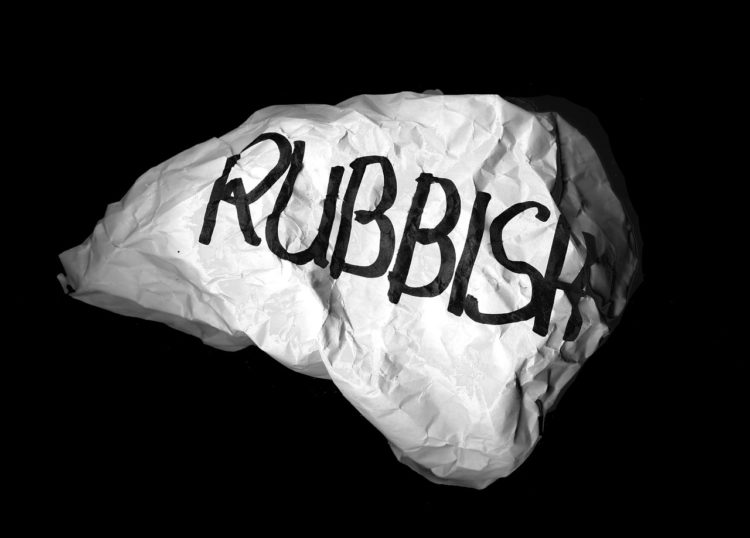I’m getting calls from very well-meaning business leaders lately. They are well-versed in many areas of business. Perhaps they were in marketing, or technology or operations. Or maybe they were responsible for the learning and development of thousands of employees. They have credentials and experience and are viewed as leaders of change in their organizations.
That’s when their boss or their CEO or maybe a member from the board asks them to take over a new responsibility – CX Strategy.
There is little discussion except for maybe an explanation of how important it is, or how it’s been neglected too long. Organizational comparisons are made: our organization versus Zappos or Southwest Airlines or maybe the local Starbucks barista who “always knows customer orders!”
 So this poor soul – the man or woman who has done such a good job that their reward is more responsibility and an exciting challenge – is asked to create a customer experience strategy out of thin air.
So this poor soul – the man or woman who has done such a good job that their reward is more responsibility and an exciting challenge – is asked to create a customer experience strategy out of thin air.
But these are do-ers we’re talking about!
These are people who make things happen. So they jump in with both feet and get to work. They do their research, read the blogs, and the books, and even attend some webinars. They begin to see this customer experience thing as more than what they originally thought it was. And they learn there are professional organizations and those of us who have been discussing these topics for decades.
Strategy is no small thing, though. Strategy means designing a proactive structure to achieve positive outcomes. It means planning not only the work of one person, but how different leaders and departments will work together to achieve those big goals around customer experience. Speaking of goals…what should our goals be again?
These well-meaning leaders have real deadlines to deliver a strategy.
Sometimes that means creating something not only out of thin air, but a strategy with little or no dedicated resources of either time or people. And so they are left with few choices, but these exciting-to-discuss-but-difficult-to-deliver CX Strategies leave a lot to be desired. And I hate to be the bearer of bad news, but these well-meaning strategies aren’t strategies at all and simply won’t work.
The answer can look so promising. We’ll get a new solution! These tools have all the bells and whistles of the latest Space Shuttle. We’ll be able to view our data from 300 different angles and ask customers for feedback at every turn!
Yes, tools can be a huge help. But technology on its own is never a solution. It’s a tool.
Without a clear understanding of not just what’s needed to set up a new technology, but how to also make it evolve with your organizational needs, technology can turn into a very expensive and time-consuming distraction. Your customers won’t care if you view their feedback from dozens of angles if they are just trying to tell you something is not working for them and nobody seems to care.

Blasphemy! Journey mapping is the answer! I’m a big believer in mapping the experience. But I’ve seen this become the latest shiny thing in customer experience. Hold a workshop! Get everyone on the same page! Produce a beautiful map and get everyone in the company to appreciate it by going on a roadshow with it.
Customer journey mapping is not the problem. Mapping is another tool. It should be a living, evolving way to understand your customer’s journey both today and in the future.
The process of mapping and those workshops should result in participants internalizing how they fit in the overall experience and how mapping can help. It’s not about a perfect deliverable. The map is only worth anything if it tells you where you are going. Customer Journey Mapping (CJM) often becomes a lesson in history instead of an impetus for changing the future.
This one is probably the most insidious!
It’s so easy to say the right thing around customer experience. We can all agree on what an ideal experience should be for customers. None of us set out to make our customers frustrated or irritated with our processes. Saying things like “omnichannel is important to customers now” or “we need to make our offline and online experiences work together” doesn’t do a lot of good if the resources and communication aren’t there to back those up.

I watched a CEO hold a company-wide “town hall” a few years ago with hundreds of employees in front of him and thousands more watching globally via video links. The big meeting was about “working smarter, not harder, for our customers.”
There were no guidelines or tools to help employees do this. But don’t worry, there were handouts! The handouts said things like “Is there a smarter way to do this?” and “Customers want more, so we need to deliver more for them.” Most employees applauded at the end and then walked away and got back to work in exactly the same way as before the meeting.
It’s about building a foundation for an entire organization to see things from the customer’s perspective. It is SO much easier said than done, especially in light of deadlines and shifting priorities and office politics.
Before taking on a generic customer experience strategy, take a moment to think about what your goals really are. Until then, don’t forget customers are the reason we’re here. (Feel free to print that on a poster!)
 Jeannie is an award-winning customer experience expert, international keynote speaker, and sought-after business coach who is trailblazing the movement from “Reactive Customer Service” to “Proactive Customer and Employee Experience.” More than 500,000 people have learned from her CX courses on LinkedIn Learning, and her insights have been featured in Forbes, The Chicago Tribune, The Wall Street Journal and NPR.
Get Jeannie’s insights in your inbox each week by subscribing to The Weekly Win and follow her on LinkedIn, Instagram and YouTube.
Jeannie is an award-winning customer experience expert, international keynote speaker, and sought-after business coach who is trailblazing the movement from “Reactive Customer Service” to “Proactive Customer and Employee Experience.” More than 500,000 people have learned from her CX courses on LinkedIn Learning, and her insights have been featured in Forbes, The Chicago Tribune, The Wall Street Journal and NPR.
Get Jeannie’s insights in your inbox each week by subscribing to The Weekly Win and follow her on LinkedIn, Instagram and YouTube.